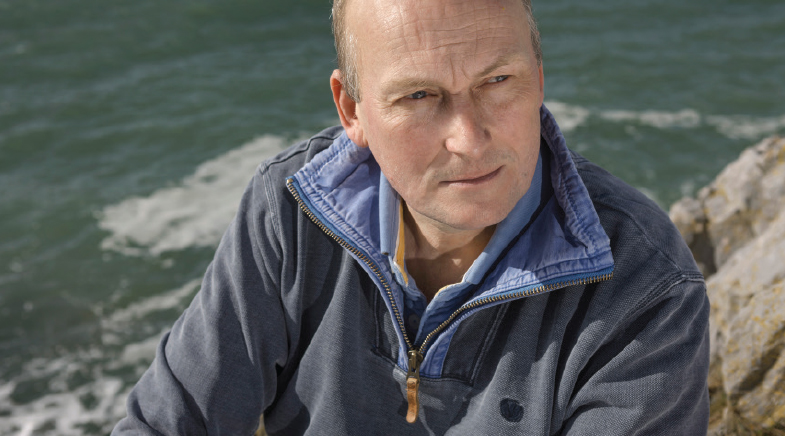A lesson in Virtual Reality
-
- from Shaastra :: vol 01 issue 04 :: Jul - Aug 2022
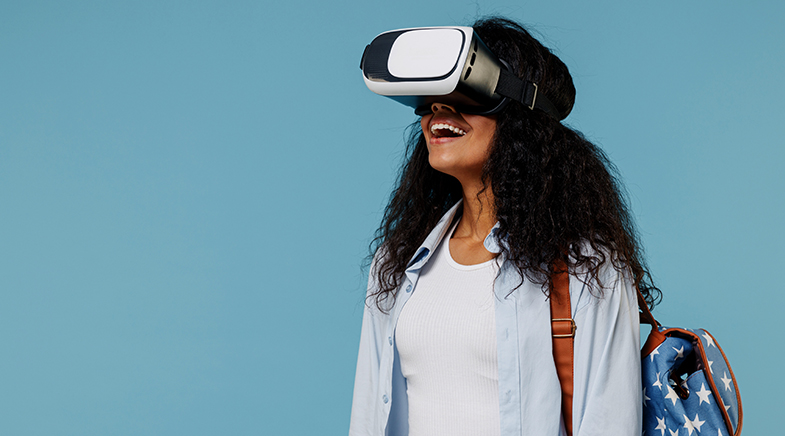
Virtual reality has breathed life into tedious online classes, with lessons in castles and simulated practical sessions.
At the height of the COVID-19 pandemic, when all teaching went online, Gary Burnett, Professor of Engineering at the University of Nottingham, U.K., reckoned that lectures delivered via video conferencing made for a poor learning experience. Being acquainted with virtual reality (VR), he explored freely available social VR platforms, and went on to construct his lessons in Mozilla Hubs, one such platform. He 'constructed' a virtual 'teaching island', where he imparted lessons on modelling human characteristics for machine design.
The lessons proved hugely popular: Burnett's class strength nearly doubled the next year, and his 'island' in the metaverse (an interoperable 3D virtual space) had to be enlarged. Now energised, Burnett went all in: he modelled his island on a medieval castle in Nottingham, and made it 'float' in the sky. He named the island 'Nottopia', a portmanteau of Nottingham and Utopia.
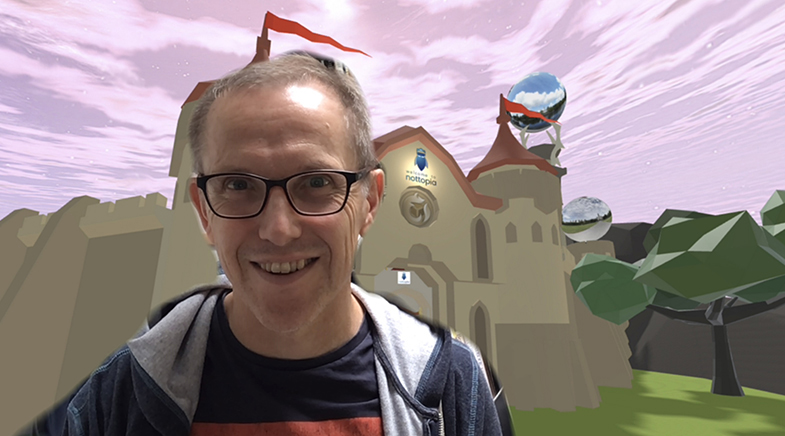
It was a learning experience for Burnett too. "I needed to think each week of some engaging activities to utilise the magical properties of VR," he says. Class activities included watching a video together, brainstorming, going on treasure hunts and workshops. Earlier, he says, he was mainly talking to them. "Now, they learn by doing stuff."
Social VR platforms can host only a limited number of participants. To overcome this, Burnett created multiple parallel universes, and connected them with portal windows, so the inhabitants of one Nottopia could see into another. "I can't replicate myself," Burnett jokes. But he effectively overcame a challenge that, in the real world, would have been impossible to solve.
VR teaching has also freed Burnett of many other constraints. He can, for instance, bring an aeroplane engine to Nottopia, and his students' avatars can hover inside and learn about every bit of it. He can teach them about the design aspects of, say, an ATM or a gym treadmill in his human-factors module. "There's plenty to keep the students interested," he notes.
In conventional learning methods, students get few opportunities to learn practical aspects of their fields. A civil engineering student, for instance, cannot validate his calculations by constructing a bridge. However, VR provides students the luxury of learning from their mistakes.
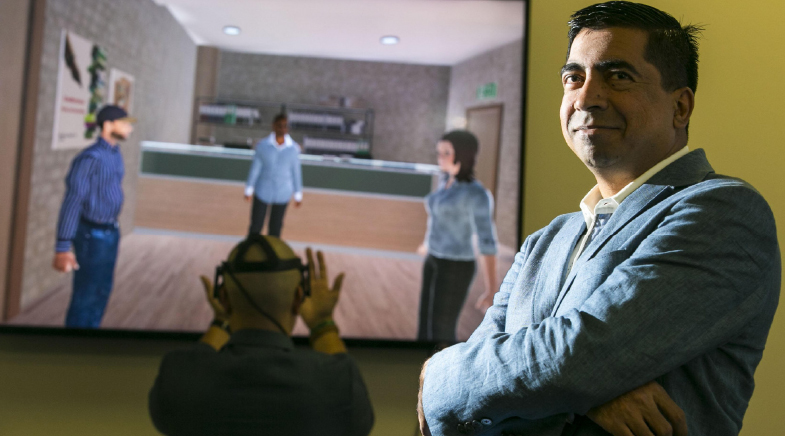
"It's better to learn by making mistakes," says Dr Sriram Kalyanaraman, Professor of Journalism at the University of Florida, who co-founded the VR for the Social Good Initiative, which claims to connect students with researchers and entrepreneurs working for the social good.
SIMULATING SCENARIOS
Kalyanaraman points out that VR can virtually simulate near-impossible scenarios – such as a journalist thrown into a war situation. The simulation can include the actual war scenario, the terrain, bombs and shelling. "Immersive VR experiences help a learner come up with the optimum responses," Kalyanaraman says. "Later, when you are in a real-life situation, you know how to respond."
A fully immersive environment would be indistinguishable for anyone from the real world.
"You truly believe that the virtual world you are inhabiting is the actual space," he stresses. He identifies four "affordances" as the four 'I's of VR in the realm of media effects: Immersion, Imagination, Impossibility, and Interaction.
Immersion puts one in another's shoes – evoking empathy, kinship and fresh perspectives, all of which lead VR to be called the "ultimate empathy machines", he says. "But we shouldn't stop there: we should see what people do as a result of generating empathy," Kalyanaraman remarks. "If I make you go through a homelessness experience, would you be willing to help the homeless?" Similarly, most people don't have a clear understanding of the ill-effects of climate change. Will a VR simulation that sensitises them to its horrors help them make more responsible consumer choices? Kalyanaraman believes that people adopt pro-social and responsible behaviours after experiencing such VR simulations. Immersive technologies enable people to see and experience the long-term consequences of their actions – be it smoking a cigarette or sowing a seed.
Two other 'I's — Imagination and Impossibility — are intertwined: they allow users to experience scenarios such as a lush green mountain alongside a pristine beach. Interactivity manifests itself as the user's ability to exert influence over virtual objects — and thus over outcomes.
SEE, FEEL, SENSE
Prof Manivannan Muniyandi's focus in the Department of Applied Mechanics at the Indian Institute of Technology (IIT) Madras has been on creating experiences. At the institute's Experiential Technology Innovation Centre (XTIC), he is trying to understand and measure human perceptions: how people see, feel, sense and interact with things, a field called psychophysics.
Immersive technologies enable people to see the long-term consequences of their actions – be it smoking a cigarette or sowing a seed.
"Just like the spreadsheet of an Integrated Circuit, we have to come up with a spreadsheet of a human being," he says. This spreadsheet details numbers that can be used for constructing experiences in VR. "Only when we measure things at the perception level can we engineer them and make products for human beings," he adds.
Prof Uttama Lahiri of IIT Gandhinagar uses VR to teach social skills to autistic children through storytelling (see box: 'To the rescue'). The VR system provides different contexts on a computer screen; a child can drag, drop and play around with various scenarios, and build a story. In the end, an 'Indianised' avatar narrates the entire story to all those who played.
TO THE RESCUE
VR technology is healing patients in innovative ways.
At the Civil Hospital in Ahmedabad, patients recovering from paralysis are largely wary of undergoing rehabilitative therapy involving limb movements. But they are happy to play a trajectory-following Virtual Reality (VR) game created and set up in the hospital by Uttama Lahiri, a Professor at the Indian Institute of Technology (IIT) Gandhinagar. In that immersive VR environment, when patients move their hands, they end up creating a painting. "For patients, VR becomes a motivation for cure," Lahiri says.
VR finds use in medical education as well (bit.ly/3QxCCbs). Many clinical practices involve risky procedures for which there is no practical feedback or equipment available to help train a doctor. Consider the epidural injection of a medication into the epidural space, the outermost part of the spinal canal. Even a small mistake in needle insertion can impair the patient's neural system for life. Until now, doctors have been practising on patients, but VR learning removes that risk.
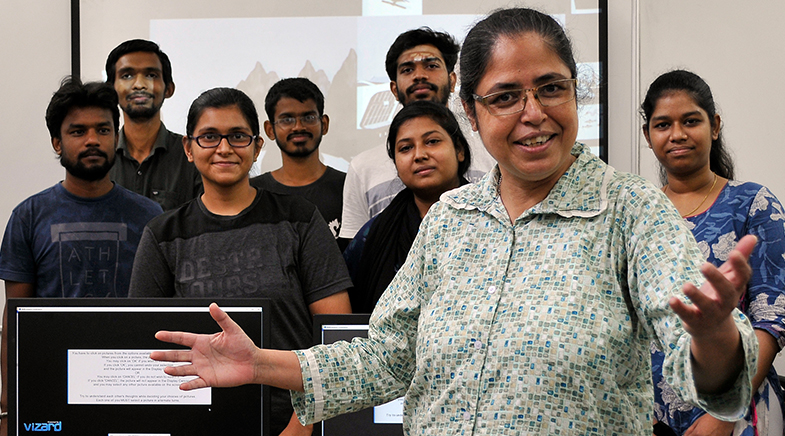
Prof Uttama Lahiri and her team at IIT Gandhinagar use virtual reality to teach social skills to autistic children through storytelling.
In fact, VR can even obviate the need for cadavers and mannequins — through the use of real-time clinical scenarios. Prof Manivannan Muniyandi at IIT Madras has created a simulator for doctors to practise specific procedures without putting patients at risk.
The VR simulator incorporates a feel-varying resistance of different layers; the resistance is lost completely when the needle enters the epidural space. "The doctors can practise as many times they want, even 'kill' their virtual patients – repeatedly! – and from that experience, acquire the skill," Manivannan observes.
However, there is no 'touch feedback' in VR, a problem that Manivannan has been looking to solve for 15 years, with one specific target application: helping clinical doctors with medical training simulators. Till now, his lab has created ten such medical simulators with Merkel Haptic System, a spin-off start-up from the lab.
Strikingly, the VR system comes with sensors and an AI engine, and tries to measure the anxiety level of a child, say from the gaze — the pupillary dilation and blink rate — or from physiological parameters such as skin temperature, sweating, heart rate and so on. Based on the anxiety level, the VR avatar will adjust its gaze pattern to put the child at ease. "As the VR environment is adaptive to their anxiety, they feel a companionship with the system, someone who can understand them. This gets them to engage better," Lahiri points out. In addition, she notes, the children are able to port their VR environment learning into real-world settings.
Lahiri has adapted the VR experience to match the special needs of autistic children. For instance, a head-mounted display distances a child from the physical space, which heightens their anxiety. Headsets also induce nausea. "For children, we have used two-dimensional VR, and it has worked very well," she says.
EMPOWERING TEACHERS
Many start-ups worldwide have begun creating educational VR lessons for school and university teachers. But they cost money and time. In some cases, teachers depend upon private enterprises creating educational VR content and others for their class preparations, cramping their freedom to tailor lessons to suit student needs.
Dr Kaushal Kumar Bhagat, an Assistant Professor at IIT Kharagpur, has built a 360° VR Educator platform, where any teacher or educator can upload their content and create their classroom lessons in VR. It doesn’t require any training: these days, any smartphone can create 360° videos and images. "This empowers a teacher to create authentic learning experiences for their students," Bhagat says. However, since it will not always be possible to generate fresh content for every topic, the platform has a database of content. Teachers can contribute content to this database as well.
A usability testing of 360° VR educator, now in its third version, is currently under way with teachers. It is not immersive in nature, yet it incorporates the element of a 360° view and interactivity. Bhagat says that the 360° VR educator and the database of content will be made available free of cost to teachers across the world.
Governmental education bodies have begun to acknowledge the effectiveness and potential of VR in the education domain. The Central Board of Secondary Education (CBSE) is introducing immersive VR and Augmented Reality (AR) technologies into school curricula. The primary focus is on skill-building, and science and mathematics. The National Council of Educational Research and Training (NCERT) has identified more than 3,000 content packages across subjects for conversion into virtual reality lessons. NCERT has already started making next-generation VR content, says Bhagat, a member of the national committee spearheading these tasks.
METAVARSITY LEARNING
What will it be like if the whole class can be inside the screen, instead of being on it? What if everyone can see and experience things around them in the same way as in physical classes? When a student cracks a joke, can it stay out of the teacher's earshot? Can the opportunities offered by online teaching be augmented with the fun-laced social dynamics of real-world classrooms?
Yes, says a newly founded platform, Invact Metaversity. The VR university has not just lecture halls, but also hallways, a library, cafeterias, auditoriums, play fields and gaming arcades. Students can hang out with their peers, and build new friendships and social networks with people outside of their courses. The best kind of accountability, educators believe, comes from one's peer group.
However, creating such social experiences and interactions comes with the challenge of creating such technology. Participants of a classroom — students or teachers — have to be all present as virtual avatars, with their videos streaming on others' devices. This might delay the interactions of students with poor connectivity. If someone goes offline, the whole environment might be affected. If there are a large number of participants, it wouldn't be easy to select which video to stream for someone and which to close, in case a lag happens on a device. To address these challenges, Tanay Pratap, Founder and CEO, Invact Metaversity, has designed a preferential role-based video switch-off algorithm. Whatever be the case, "a teacher's video should not go off," Pratap says.
CBSE is introducing immersive VR and Augmented Reality technologies into school curricula. The primary focus is on skill-building, and science and mathematics.
Assignments, case studies, projects, course credits, examinations, certifications; everything that a student turns in would be some kind of a virtual project in Invact Metaversity. Students would own full rights to them as a Non-Fungible Token (NFT), a unique digital identifier. Pratap is linking all of a student's proof of work to a unique and personal virtual identity, thereby building into a metafolio — a portfolio in metaverse.
"Traditional resumes are outdated," he says. The metafolio would be available on blockchain, providing a complete sense of ownership and authenticity of a student's work. "It would be peer-reviewed and publicly verifiable," he adds.
Not only will this help personalise the delivery of the curriculum, it will also enable the student to find the right job role and the company to apply to. Recruiters complain about not getting the measure of a candidate: this process would help. Start-ups and companies are already hiring skilled people for jobs, even when they do not have matching academic qualifications, Pratap says. Invact Metaversity's focus, he adds, will be on the three pillars of traditional education: curriculum, community and credentials.
INDIA AS VR CORRIDOR
"In the next two decades, we want India to be the virtual reality corridor of the world," Manivannan says of his vision for the XTIC centre. The first road to building such a corridor is training. Specifically tailored courses would be launched for students, ranging from those in schools to those in Industrial Training Institutes and engineering colleges. XTIC would be in every city, and all of them would be networked together to form this VR corridor.
"We'll be teaching in the XTIC centres so that everybody can build VR infrastructures," he says. "IIT Madras's core expertise is in teaching. We can leverage that," he adds.
Have a
story idea?
Tell us.
Do you have a recent research paper or an idea for a science/technology-themed article that you'd like to tell us about?
GET IN TOUCH











